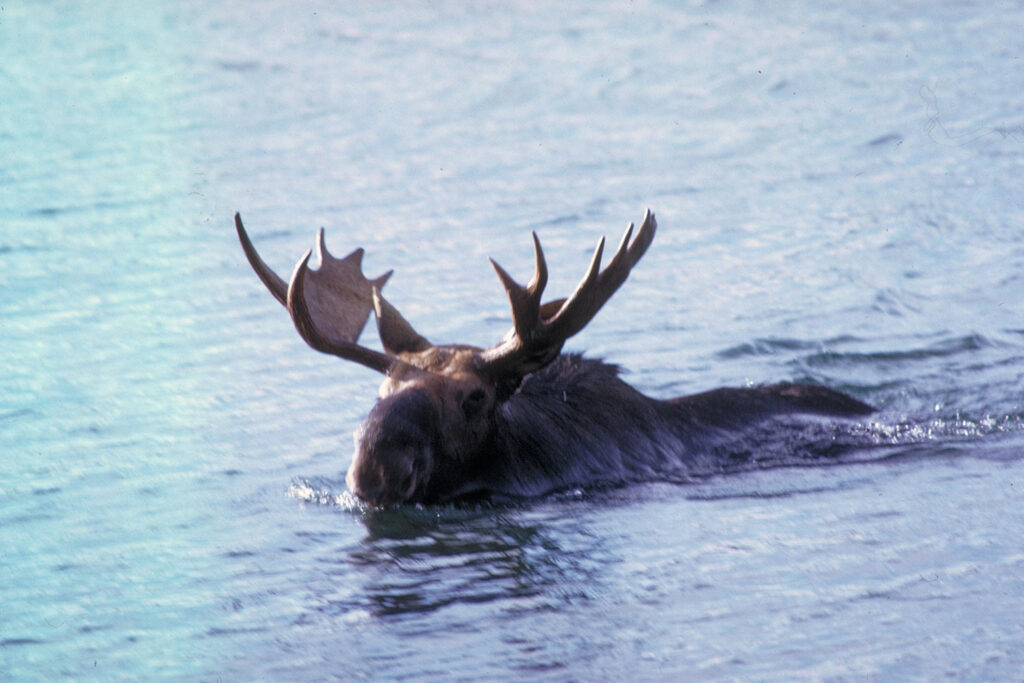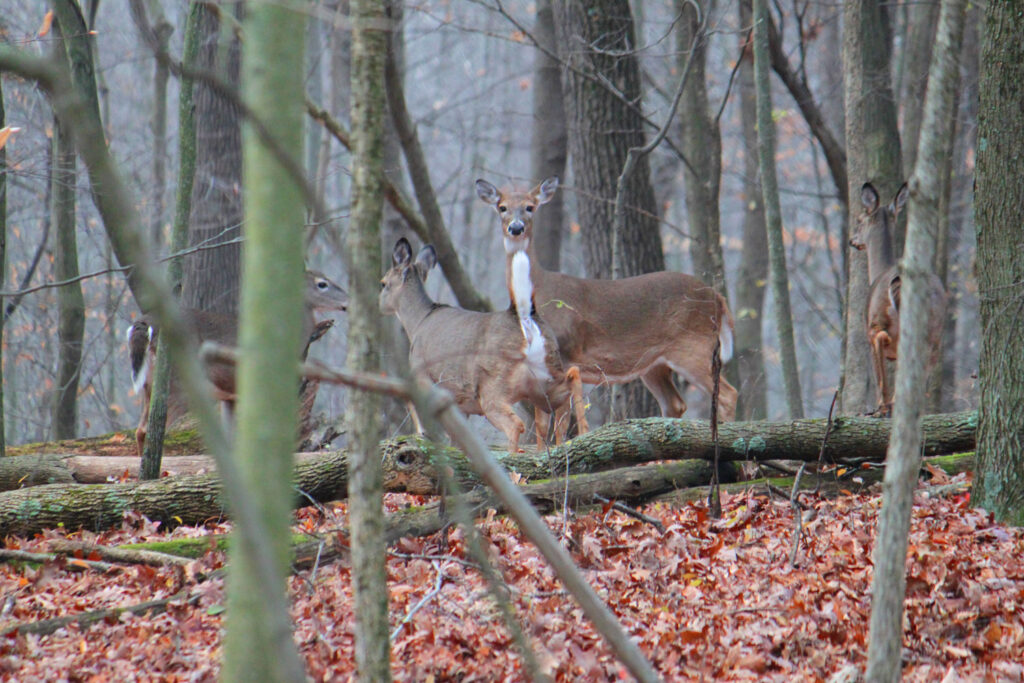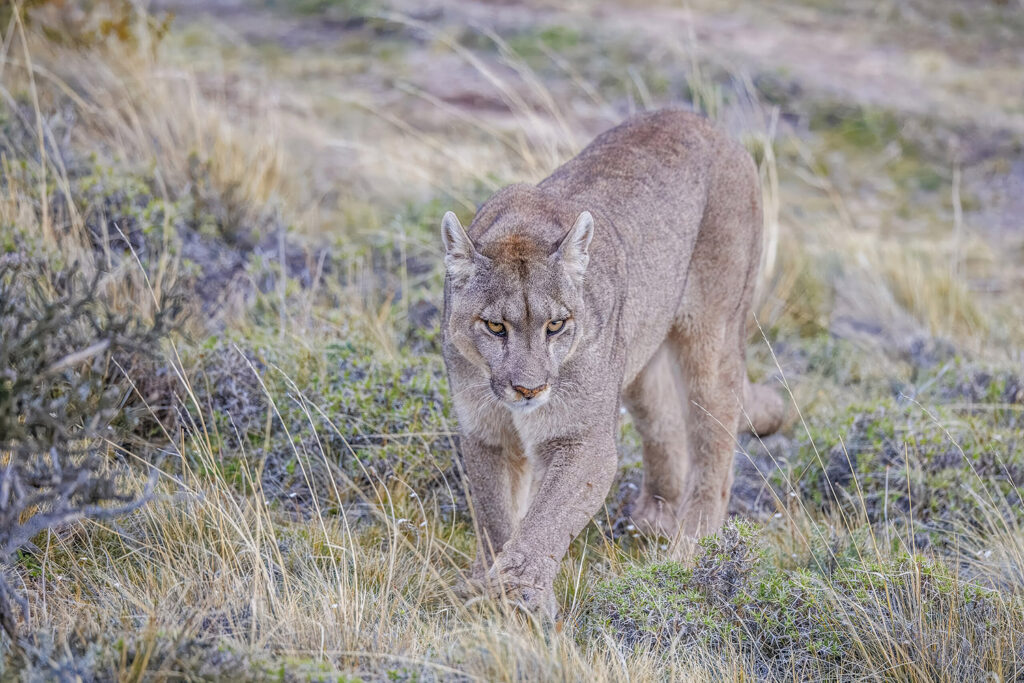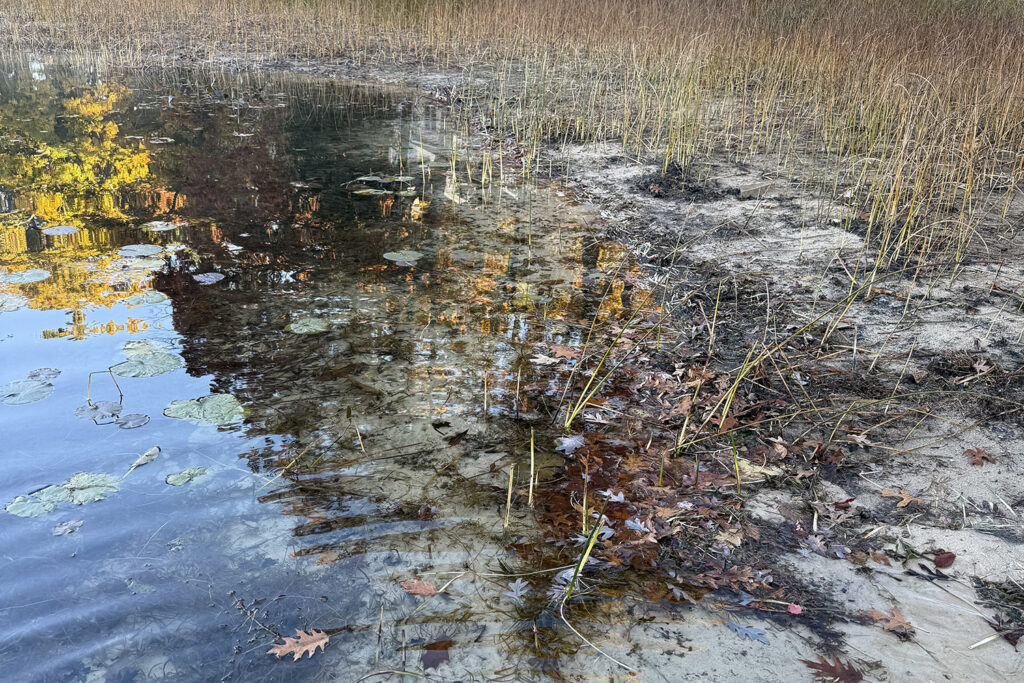Most Michiganders are totally unaware that we have moose in our fine state. It’s a shame, too. There’s something magical about a moose. They’re both hard to find and impossibly huge. You’ll find them deep in the U.P., with their scooping antlers and long legs. Part deer, part mythical creature, to encounter them is to encounter the wild itself. Their very presence in our state is a stark reminder of a wilder Michigan. This wildness is in danger of slipping away, just as they are.
Moose have a storied past here in Michigan. For eons, they roamed across most of the state but, by the late 1800s, they were almost totally gone. As Michigan’s wilderness shrank, so did the places moose could live. Add in a heavy dose of unregulated market hunting, and our herd was all but wiped out.
In the 1980s, Michigan’s DNR worked out a deal with Ontario. In exchange for a flock of our wild turkeys, Ontario’s Ministry of Natural Resources provided a group of 59 moose from the Algonquin Provincial Park. A mix of bulls and cows, the goal was to re-establish a healthy, self-sustaining population in a landscape that had changed a lot.
For a while, the project seemed to be working, and the population in the U.P. grew steadily. Right now, there are roughly 500 moose in the western U.P., primarily in Marquette, Baraga, and Iron counties. But that number hasn’t changed much in the past decade. Stability? Maybe. It’s a fragile balance, and the world around them isn’t changing in their favor.
While the U.P. isn’t seeing the same kind of suburban sprawl as other parts of our state, moose habitat is increasingly being fragmented by human activities. Roads, power lines, and small-scale logging operations are carving up once contiguous stretches of wilderness. Fragmentation isolates moose populations and forces them into closer contact with roads. Last year alone, five bull moose were killed by vehicles in the U.P. in a single week. The woods might still be vast, but criss-crossing roads are becoming death traps for our moose, and us. Moose are especially dangerous in these accidents, given their long legs and towering height. Rather than being shot over the hood like most deer do when hit, moose tend to fall directly into the cab. It’s not pretty.
Less habitat means moose and deer have closer contact. Brain worms become a problem. These parasites are harmless to deer but deadly to a moose. They’re spread from deer, attacking moose brains, causing disorientation, erratic behavior and, ultimately, death.
The same forces that have chipped away at Michigan’s wilderness are now threatening our stately ungulates. Warmer winters are making it harder for them to survive. These animals are built for cold climates, and milder winters reduce the snowpack that moose rely on to keep parasites like ticks at bay. Winter ticks, often called moose ticks, are especially deadly. These little devils latch onto moose by the thousands, draining their blood and weakening them to the point of death. Moose need cold winters to kill ticks. But, as most Michiganders have noticed, these sorts of winters are becoming rarer.
The future of our moose herd hangs in the balance, much like the future of Michigan’s remaining wilderness. As the wild places in our state give way to the modern world, its beasts do too. Moose are bellwether. The same things that threaten them, threaten us.
James Zandstra is an experienced outdoorsman with a passion for the Mitten State. Follow him on X @TheFairChase1.



